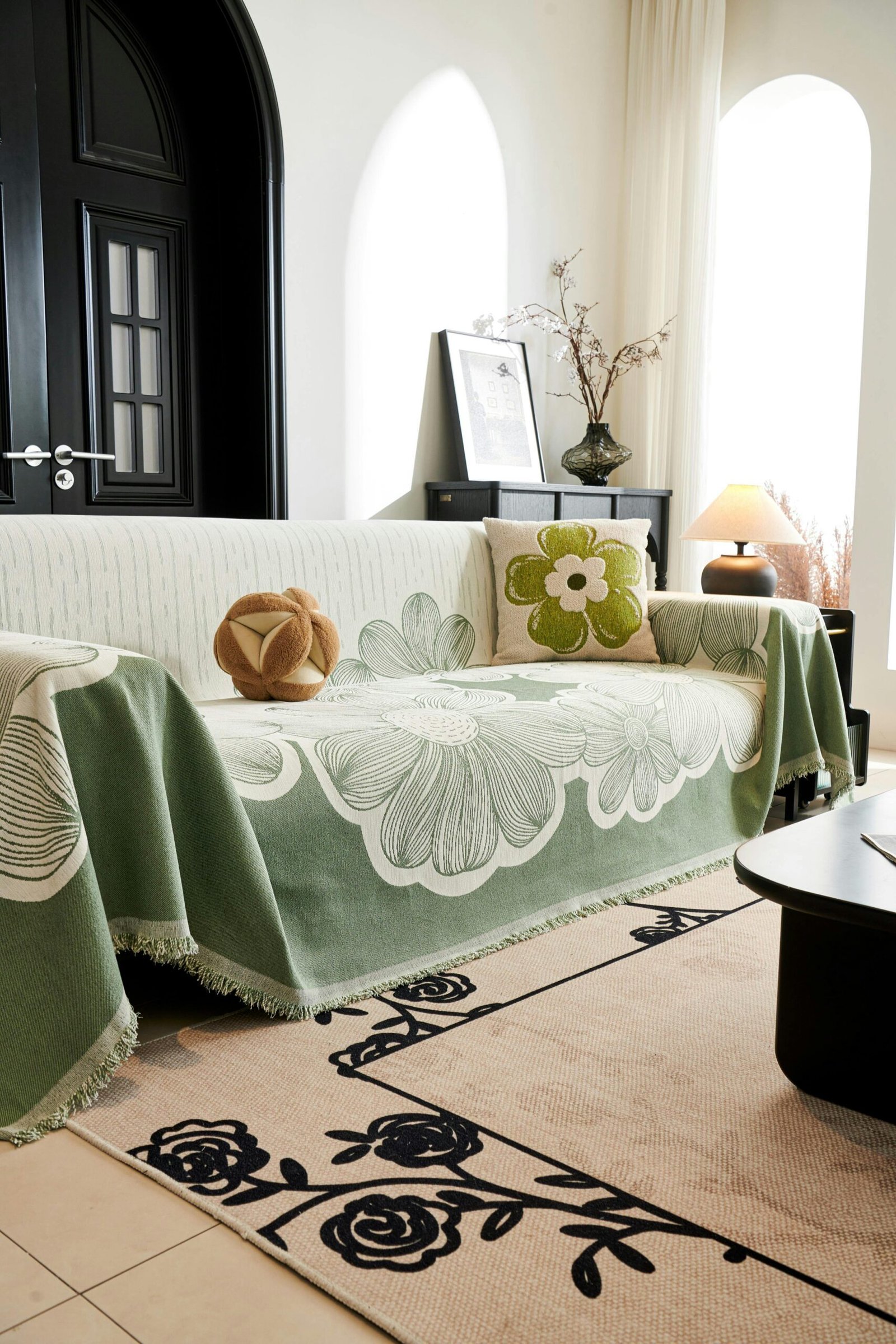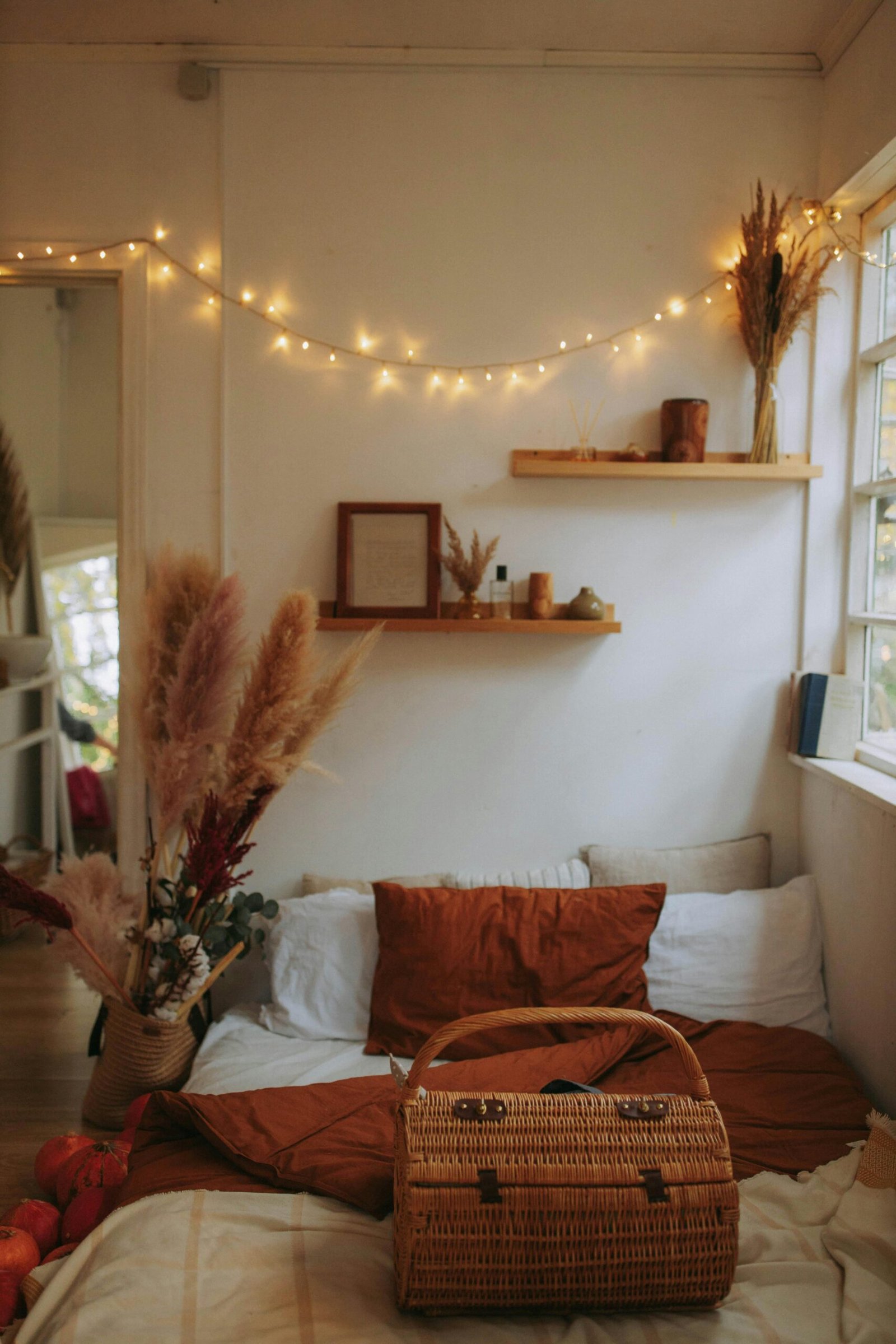Rustic design has an undeniable charm that invites you to slow down, appreciate the simplicity of life, and connect with nature. But what exactly is a rustic home? It’s more than just wooden furniture and earthy tones—it’s an aesthetic that celebrates natural materials, understated beauty, and a sense of warmth. Rustic interiors evoke feelings of coziness and nostalgia, making them the perfect style for anyone seeking a more grounded and serene home environment. Whether you’re building from scratch or looking to add a touch of rustic elegance to your existing space, embracing nature and simplicity can transform your home into a peaceful retreat.
1. Embracing the Charm of Rustic Design
Rustic design is timeless and ageless, drawing inspiration from nature, the countryside, and a slower, simpler way of life. But what makes it so special?
The Roots of Rustic Design
At its core, rustic design emphasizes raw, natural beauty—think weathered wood, stone, and simple, functional furnishings. It’s all about bringing the outdoors in and celebrating the authenticity of materials, often showcasing imperfections like exposed beams or natural knots in wood.
Rustic Design vs. Other Styles
While modern and contemporary designs focus on sleek lines and minimalism, rustic design embraces the beauty of imperfection. It’s more relaxed and comfortable, often leaning toward a homier, lived-in feel, which makes it a stark contrast to the polished finishes of more modern aesthetics.
2. The Key Elements of Rustic Home Aesthetics
A rustic home is built upon a few foundational elements that enhance its earthy appeal.
Natural Materials
Wood, stone, and metal are the building blocks of rustic interiors. These materials are not just aesthetically pleasing but also functional, durable, and timeless. Incorporating them into your furniture, flooring, and fixtures is key to creating a rustic look.
Neutral and Earthy Color Palettes
Rustic design is rooted in earthy tones—think browns, tans, beiges, and greys, with accents of deeper shades like forest green or warm reds. These colors evoke the natural world, providing a calm, grounded atmosphere.
Raw, Unfinished Features
Rustic homes often feature raw, unfinished materials. Think exposed wooden beams, natural stone walls, and unfinished wooden furniture. These elements highlight the authenticity and rustic charm of the space, giving the home a unique character.
3. The Role of Wood in Rustic Interiors
Wood is the star player in rustic homes, adding warmth, texture, and visual interest.
Using Wood for Furniture and Decor
Wooden furniture is a must-have in rustic spaces. Reclaimed or distressed wood, with its timeworn look, adds depth and character to tables, chairs, and shelves. Opt for large, sturdy furniture pieces that make a bold statement without being overly ornate.
Exposed Wooden Beams
Exposed wooden beams are one of the most iconic features of rustic homes. They add visual height to the room and create a sense of openness, drawing attention to the architectural beauty of the space. Whether in the living room or kitchen, they can be a striking focal point.
Wooden Flooring: A Classic Touch
Hardwood floors bring a rustic home to life. From light oak to deep walnut, wooden floors add warmth and texture. Plus, they’re durable and easy to maintain, making them perfect for high-traffic areas like kitchens and living rooms.
4. Stone and Metal: Complementary Rustic Materials
While wood is a dominant feature, stone and metal also play a crucial role in achieving that rustic charm.
Stone Walls and Fireplaces
Stone walls or a stone fireplace can anchor a room, adding an earthy, tactile quality. A stone feature like this creates a cozy, rustic atmosphere and is perfect for creating focal points in the living room or entryway.
Metal Accents for Contrast
Metal accents, such as wrought iron light fixtures, copper pots, or steel frames, contrast beautifully with the warmth of wood and stone. These materials introduce a modern edge to a rustic home, adding depth and dimension.
5. The Power of Textures in Rustic Design
Textures are essential to rustic design—they add richness and tactile interest to your home.
Layering Soft and Rough Textures
To create balance, layer soft and rough textures. Pair a plush wool rug with a rugged stone fireplace or soft velvet cushions with raw wood furniture. This contrast creates a rich, inviting feel that is both comfortable and visually appealing.
Fabrics that Enhance the Rustic Feel
Choose fabrics like linen, wool, and burlap to further enhance the rustic vibe. These natural, breathable fabrics are not only functional but add a rustic charm to your furnishings, from sofas to curtains to bed linens.
6. Lighting in Rustic Spaces
Lighting plays a significant role in setting the mood and enhancing the rustic charm of a space.
Warm, Ambient Lighting
The key to lighting a rustic home is creating warmth. Avoid harsh, fluorescent lighting, and opt for warm, ambient lighting to make the space feel inviting and cozy. Soft, dim lights are ideal for achieving a relaxed, intimate atmosphere.
Vintage and Industrial Lighting Fixtures
Vintage-style light fixtures, like lanterns or Edison bulbs, work well in rustic interiors. Metal and wrought iron fixtures complement the raw materials in rustic spaces, adding a touch of industrial charm while still feeling organic.
7. Incorporating Nature into Your Rustic Home
The rustic aesthetic thrives on a deep connection to nature, so why not incorporate natural elements into your home?
Indoor Plants and Greenery
Indoor plants are the perfect way to add life and vibrancy to a rustic space. Whether you opt for potted plants, hanging greenery, or small succulents, these natural elements enhance the earthy feel of the room.
Natural Views and Outdoor Living Spaces
Rustic homes often feature expansive windows that bring the outdoors in, offering stunning views of nature. Create outdoor living spaces, such as a wooden deck or patio with comfortable seating, to enjoy the beauty of nature all year round.
8. Rustic Furniture: Timeless and Durable
Rustic furniture is designed for both beauty and function, with a focus on durability and craftsmanship.
Choosing the Right Pieces for Your Home
Look for large, sturdy furniture pieces made from natural materials like reclaimed wood or wrought iron. Opt for furniture that is simple in design but with visible craftsmanship that highlights the raw beauty of the materials.
Reclaimed Wood Furniture
Reclaimed wood is not only eco-friendly but also rich in character. Furniture made from reclaimed wood tells a story, with each piece carrying a unique history that adds depth and authenticity to your space.
9. Simple, Practical Decor
Rustic decor is often minimalistic, with an emphasis on practicality and personal touches.
Keeping Decorations Minimal but Meaningful
Decorate with purpose—choose items that are meaningful or functional. Think vintage mirrors, handmade pottery, or wooden shelves for books. These pieces contribute to the rustic charm without overwhelming the space.
Handmade and Vintage Items
Handmade and vintage items are the heart of rustic design. From handcrafted pottery to antique furniture pieces, these items tell a story and add personal flair to your home.
10. Color Palettes for a Rustic Home
The right color palette can tie the rustic look together beautifully.
Earth Tones and Warm Shades
Neutral, earthy tones—beiges, browns, greens, and soft whites—are perfect for a rustic home. These colors mimic the natural world and create a calming, cohesive atmosphere.
Adding Accent Colors Without Overdoing It
While earthy tones dominate, feel free to incorporate a pop of accent colors. Rich, deep hues like forest green, burnt orange, or mustard yellow add personality without overwhelming the space.
11. Creating a Cozy and Inviting Atmosphere
Comfort is essential in rustic design—it’s all about creating a space that feels like a warm hug.
The Importance of Comfort in Rustic Design
Rustic homes are meant to be lived in. Comfortable seating, soft blankets, and inviting textures should be central to your design. Cozy chairs, plush pillows, and thick rugs make the space feel inviting.
Layering Textiles for Warmth and Coziness
Layer fabrics for added warmth—throw blankets, cushions, and area rugs can create a welcoming atmosphere. Don’t be afraid to add layers that make the room feel snug and comfortable.
12. Rustic Kitchens: Where Function Meets Style
The kitchen is often the heart of the home, and rustic kitchens are no exception.
Using Natural Materials for Countertops and Cabinets
Wooden countertops and cabinetry lend a rustic, homey feel to the kitchen. Combine them with natural stone backsplashes or granite countertops for a perfect balance of function and beauty.
Open Shelving and Practical Layouts
Open shelving is a hallmark of rustic kitchens. It not only adds to the charm but also makes items easily accessible. Keep the layout practical with plenty of counter space and durable, easy-to-maintain surfaces.
13. Bathrooms with a Rustic Touch
Rustic bathrooms are all about creating a serene, spa-like atmosphere.
Natural Stone and Wood for a Spa-Like Feel
Stone tiles and wooden accents are perfect for creating a calming, rustic bathroom. Pair these elements with soft lighting and simple accessories for a tranquil, nature-inspired retreat.
Vintage Fixtures and Accessories
Vintage fixtures, such as an antique mirror or brass faucet, add character to the space while maintaining the rustic feel. Keep accessories minimal and meaningful—think woven baskets or rustic wooden shelves.
14. How to Incorporate Rustic Design into Modern Homes
Want to blend rustic elements with a modern home? It’s all about finding the right balance.
Mixing Rustic and Modern Elements
You can easily integrate rustic charm into a modern home by pairing raw materials like wood and stone with sleek, contemporary furnishings. The key is to create a seamless blend that enhances both styles.
Achieving Balance Between Old and New
Balance is crucial. A modern design might feature clean lines and minimalism, but adding a few rustic accents—like a reclaimed wood coffee table or a vintage rug—introduces warmth and personality without overpowering the space.
15. Conclusion: Celebrating the Rustic Aesthetic in Your Home
The rustic home aesthetic is a celebration of nature, simplicity, and timeless beauty. By incorporating natural materials, earthy colors, and meaningful décor, you can create a space that feels grounded, inviting, and comforting. Whether you’re building from scratch or simply adding a few rustic touches, embracing this style will help you connect with nature and create a space that feels like home.
5 Unique FAQs
- How can I make my home feel rustic without it feeling outdated?
Focus on using natural materials like reclaimed wood, stone, and simple, functional furniture. Avoid overly ornate decorations and stick to clean lines with a few vintage or handcrafted touches. - What are some cost-effective ways to add rustic elements to my home?
Reclaimed wood, vintage furniture, and handmade décor items can be affordable yet authentic rustic elements. Scour thrift stores or online marketplaces for great finds. - How do I incorporate modern features into a rustic home?
Mix modern design with rustic elements by combining sleek furniture with raw materials like wood and stone. Incorporate modern technology in a way that complements the rustic feel. - What are the best materials for a rustic kitchen?
Natural wood for cabinets and countertops, stone backsplashes, and metal accents are ideal. Choose materials that are both functional and stylish. - Can I make a small space feel rustic without overcrowding it?
Yes! Stick to simple furniture with natural finishes, and use light colors to open up the space. A few key rustic elements, like a wooden shelf or a vintage rug, can add charm without overcrowding.





